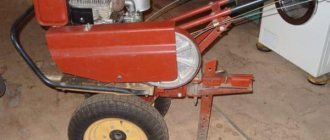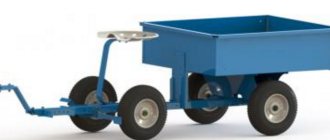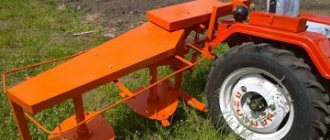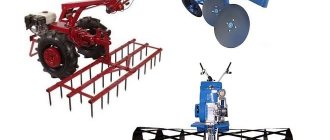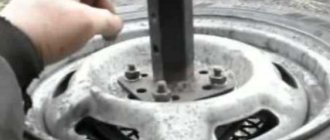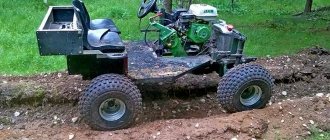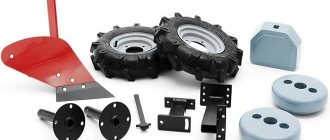Selecting a hitch
Any trailed or mounted device for motor vehicles, be it a trailer cart, a mower, a hiller, a harrow or any other equipment, is fixed using a hitch. If the base element is not suitable, the owner has a choice - buy a suitable one or make a hitch for the unit with his own hands.
Be that as it may, when deciding which of the mechanism options can best meet the functions performed by the unit, it is necessary to take into account a number of factors, the list of which includes:
- distinctive features of a cultivator or walk-behind tractor;
- scope of use of the unit - the duties it performs;
- equipment that will be integrated with it;
- loads;
- need for versatility.
Based on this, it is necessary to carefully familiarize yourself with the most frequently used devices and choose, taking as a basis the properties of what is best suited in this case.
Varieties
When selecting a hitch for a unit, you should take as a basis the most relevant type of element.
There are several varieties.
- Single and double – used when there are different models of attachments. It all depends on which ones are practiced and in what numbers.
- Reinforced – ideal for heavy motorcycles. Its distinctive feature is that it is more impressive - it is longer and thicker, which allows the auxiliary equipment to sink deeper into the soil.
- Customizable – with the option to change the angle of the shaft, through which you can adjust the level of fixation of attachments and thereby increase work productivity.
- Universal coupling device - involves aggregation with many modifications.
If a coupling device for a motorcycle of the required modification is not commercially available or there are individual requirements for it, creating it on your own will not be difficult, since we are talking about a rather simple mechanism.
Craftsmen, who make most of the “accessories” for motorcycles with their own hands, construct the “pipe-in-pipe” trailer coupling device from a crosspiece, from a cardan and other improvised elements preserved from various devices. The owners of such devices claim that it is possible to create such a unit without any problems by sharing personal experience and drawings of the coupling device on the Internet.
Recommendations and tips for choosing
People who are choosing a new walk-behind trailer for the first time often have difficulties. To make the purchasing process easier, it is recommended that you familiarize yourself with several useful guidelines. When choosing a trolley for a walk-behind tractor, you need to:
- Decide on the purposes for which the walk-behind tractor equipped with a trailer will be used. For example, if it will often be used to transport bulk cargo, it is better to look for a model with a folding side.
- Determine the optimal dimensions. When choosing the appropriate size, pay attention not only to the size of the cargo being transported, but also to the power of the walk-behind tractor. For vehicles with a powerful engine, you can purchase a larger trolley.
- Pay attention to the manufacturer. It is recommended to buy trailers only from reputable brands. The fact is that they produce the highest quality products that are sure to last a long time.
Also, when choosing a new tow hitch, you need to pay attention to its price.
You should not buy the cheapest models, as they are often of poor quality. It's better to pay a little more and buy a reliable design from a reputable manufacturer.
Hitch drawings for walk-behind tractor
Below are drawings of a universal hitch suitable for most popular brands of walk-behind tractors, such as: Tselina, OKA, Neva, Salyut, Favorit, etc.
The purpose of the universal hitch is in connection with a walk-behind tractor for attachments: harrows, plows, diggers, planters, etc.
Installing a hitch on a walk-behind tractor
To the walk-behind tractor brackets, the hitch brackets are installed using pins. For more reliable fastening, it is recommended to fix the bracket using M14 bolts.
Installation of equipment on the hitch
To install additional equipment, the hitch axle must be mounted to the equipment bracket; by the way, it is removable. Next, the axle is inserted into the outer hole of the hitch. It is necessary to tighten the bolt, aligning the holes on the housing and the equipment rack. Next, all that remains is to secure the contact with an M12 bolt and a corresponding nut.
Why does a walk-behind tractor need a hitch? no need to explain, the same adapter, an irreplaceable thing, but without a hitch you can’t go anywhere.
How to do it yourself?
When performing its functions, the hitch for a walk-behind tractor will bear heavy loads, which means that it is necessary to comply with the recommended strength and dimensional parameters of all components of the assembly.
Then the following properties of the coupling device will be ensured:
- guarantee of strong pairing with the walk-behind tractor;
- fastening to attachments;
- guarantee of the declared performance properties of the products;
- acceptable price;
- quality, long service life.
When choosing a modification, you need to check the dimensions of the towing device (towbar) of the walk-behind tractor and attachments (harrow, trailer, plow, etc.).
The specialist’s task is to ensure absolute compatibility of components, ease of use and the ability to quickly configure equipment for a specific task.
The main component of the multifunctional hitch is a U-shaped holder. Through the holes on one side, it is fixed to the motor vehicle using pins; on the other side, a rack of the required attachments is attached to the casing of the device.
Required tools, materials and accessories
There is a certain set of tools that are needed to create a coupling device. Basically, everything that is needed to assemble such elements is available on the farm of everyone who cultivates their own plot of land.
You will need the following tools:
- angle grinder;
- electric drill or drilling machine;
- measuring instruments: square, tape measure, ruler;
- welding machine;
- set of wrenches;
- fasteners (studs, bolts).
It should be noted that in this situation it is extremely important that the holes that will be drilled into the part coincide exactly with the studs and bolts. A gap in diameter is not needed, because it will reduce the operating period of the trailers and canopies used.
At the same time, during the work, it is important to first make holes in the element with the smallest diameter (from 5 millimeters), and then drill them with larger drills (up to 12-16 millimeters, in accordance with the diameters of the bolts).
This method will speed up and simplify this part of the work, while at the same time allowing you to measure the holes as accurately as possible. To create the frame, you can use a channel of the appropriate size, and if it is missing, you can assemble an element from an iron sheet.
A modification of a custom hitch is very practical - such a design will make it possible to connect attachments of different generations, classes and brands. Despite the fact that such a design is not in demand at the moment, we must not forget that various devices will gradually appear on the farm, and the possibility of convenient aggregation of each of them will seriously increase the choice, making it possible to proceed only from the necessary functional features of the equipment.
Blueprints
Assembling a coupling device for motorcycles on your own involves the use of drawing materials. There are quite a few different options, but it is better to take the most suitable one as a basis and adjust it, taking into account the characteristics of your own equipment.
The drawing should reflect the following elements:
- 2 U-shaped parts, equal in all characteristics, but with a different number of holes - in the first 6, in the second 8;
- a housing containing 2 threads with diameters M12 and M16 and equipped with a mounting structure for fixation with one of the units;
- the adjustment element is a handle placed on the body of the element; its structure includes a screw connected to the holder and having a handle for comfort (it is important to calculate the exact direction of the holder - exclusively up or down and so that it does not interfere with the operation of the motorcycle).
Because motorcycles, under any conditions, require pairing with a hitch, you can find out the details of the location of the connection in its present instructions.
Step by step guide
To make a multifunctional connection, you need an extremely flat plane - a special work table. The plan for manufacturing a coupling device for a walk-behind tractor is as follows.
- Make the markings according to the drawing: mark the outlines of the elements on the workpiece.
- Using an electric drill or drilling machine, make holes according to the marks. Make sure they are correct by using a caliper and a pin (bolt) that will be used to fix them. Achieve a suitable hole diameter at which there is no backlash and the fasteners do not jam.
- Weld the connections. It is preferable to use electric arc welding, in which heating occurs exclusively in the joint areas without any harm to the working properties of the steel.
- Assemble the part. Connect the holder and channel with bolts. If the design has a setting tool, attach that too.
- The fasteners by which the coupling device is attached to the walk-behind tractor through the holes in the units must be of the same quality and strength as the device itself.
Let us remind you again that the part is performed so that the versatility of the walk-behind tractor is maximized.
If you have an ideally suited coupling device, it is possible to comfortably aggregate and long-term effective operation of each suspended or trailed equipment, including: adapter, hiller, harrow, plow, trailer, all kinds of mowers, potato planters and any other devices.
And for the reason that the fixation components on different equipment may differ, which usually makes it difficult for them to interact with the walk-behind tractor, the successful design of the coupling device and the ability to configure it solve this problem.
Installation of attachments on motor vehicles
After assembling the part, the main thing is to connect it correctly. The installation techniques are quite simple, but it is important to follow them. In essence, docking equipment to a walk-behind tractor comes down to a rather simple action: you need to make sure that the holes of the coupling device and the hitch match and secure them with bolts or pins. Radial holes make it possible to adjust the position of the connecting device during operation.
Upon completion of installation, it is necessary to tighten the components of the threaded fastening of the device to the motorcycle. Then the attachments are attached.
After the initial aggregation of the devices, final fixation will follow, which must be performed right before starting work. The adjusting elements (bolts) must be loosened, the ideal level of fixation must be found, and then tightened with wrenches.
Depending on the structure, a replaceable threaded pin can be placed on the holder, into which an M16 bolt is screwed.
Hitch for walk-behind tractor and walk-behind cultivator "NEVA"
NEVA walk-behind tractors and walk-behind cultivators are multifunctional units designed to perform a wide range of agricultural work. These works are carried out using various types of mounted implements, among which are plows, hillers, weeder-rippers, potato planters and potato diggers. To attach the hitch, use a hitch on a walk-behind tractor or a hitch on a cultivator. Please note that some types of coupling devices are attached to the NEVA walk-behind tractor, and others are attached to the cultivator. The only exception is the NEVA MK200 motor-cultivator, which has a motor-block type hitch. This allows you to attach implements designed for a walk-behind tractor to the cultivator. The production of these products for NEVA motor vehicles is carried out at (Veliky Novgorod) and at CJSC Vsevolozhsk Mechanical Repair Plant (Vsevolozhsk). Since 2019, these enterprises began producing soil-cultivating implements under the NEVA Mototekhnika brand. The mounted units produced are made in dark blue and are marked accordingly. Read more about this in the article “Branded attachments for NEVA motorcycles.” You can purchase a hitch for a walk-behind tractor in retail stores, as well as on the websites of our regional dealers. The recommended retail price for coupling devices is presented on our website. However, please note that the price of the product may vary depending on the region of sale.
Hitch for walk-behind tractor: installation of plows, hillers and diggers
There is a large selection of hitches for NEVA walk-behind tractors on sale. As a rule, these coupling devices are universal. In other words, they are suitable for both plows and hillers and potato diggers. However, in order to choose the right hitch for a walk-behind tractor, you should pay attention to the specific model of the tillage implement that you want to attach to the walk-behind tractor. Sometimes hitches are not interchangeable. In other words, a hitch suitable for a PN plow is not suitable for an N plow. The same applies to hillers and diggers. At the same time, the listed coupling devices are applicable for all NEVA walk-behind tractors, regardless of modification. These devices are also used to install the attachment on the MK200 cultivator. If you are interested in purchasing a hitch, we recommend that you use the interactive dealer location map. Using the map you will find out where to buy a hitch for a walk-behind tractor, as well as other products of the NEVA Mototechnika brand. Hitch for the NEVA walk-behind tractor (two adjustments)
The hitch is a device for mounting on the NEVA walk-behind tractor and the MK200 motor-cultivator such mounted implements as the PN plow, the OND double-body hiller, the double-row folding hiller, and the ONO single-row hiller. This product has two adjustments that allow you to select the appropriate angle of rotation of the implement and the depth of processing. Changing the turning angle of the plow is done by rearranging the pins in the grooves of the plate located at the base of the unit. Adjustment of the processing depth is carried out by rotating the M14 bolt. The hitch for the walk-behind tractor must be purchased separately. However, our assortment includes the PN plow, which includes this hitch. The coupling device is sold at the retail outlets of our regional dealers, as well as in the NEVA Mototechnika trade and exhibition kit.
Hitch
Universal hitch N (01.06.50.00.00)
Universal hitch H (two adjustments)
The universal hitch N (01.06.50.00.00) allows you to install on the NEVA walk-behind tractor of any modification or the MK200 motor-cultivator such units as a single-furrow plow N, a reversible plow, a plow B, a double-row hiller STV, a single-row hiller STV NPD, a single-row hiller NPD, a disk hiller, disc hiller with furrower, weeder-rippers. The coupling device helps to manually adjust the longitudinal grip angle in the range from -13° to +20°, as well as the working depth. You can buy a hitch for a walk-behind tractor from our regional representatives. If you live in St. Petersburg, you can go to the company store at the plant and purchase this coupling device.
Universal hitch H (three adjustments)
The universal hitch N (01.06.20.00.00) is used to attach the following types of attachments to NEVA walk-behind tractors and the MK200 motor-cultivator: reversible plow, N plow, B plow, disc hiller with furrow maker, NPD digger. The product has three adjustments. The first adjustment is made possible by changing the angle of inclination of the unit's stand to adjust it to the processing of a specific soil. The second adjustment helps to change the depth of processing by changing the height of the implement stand. The third adjustment is used to compensate for the tilt of the walk-behind tractor (cultivator) during plowing by changing the radius grooves on the flanges of the coupling body. The hitch is not included with the hitch. This product is available for sale at our dealers' outlets.
Universal hitch N (01.06.20.00.00)
Universal hitch N (01.06.40.00.00)
Universal hitch N with a lock (three adjustments)
Universal hitch N with a lock (01.06.40.00.00) is used for installation on the NEVA walk-behind tractor and the MK200 cultivator with mounted implements: reversible plow, plow N, plow B, disc hiller with furrow maker, NPD digger, digger N, potato digger. Using this coupling device, you can 1) adjust the working depth by changing the angle of inclination of the implement; 2) adjust the height of the unit stand; 3) change the position of the hitch in the transverse-vertical plane. Product sold separately. If you want to buy a hitch, please contact our regional representatives. You can find a dealer in your city using the interactive map.
Hitch for a motor cultivator: installation of plows, hillers and diggers
In addition to cultivation, NEVA motor cultivators are also applicable for carrying out such agrotechnical work as plowing, hilling, weeding, and digging up root crops.
In performing these operations, cultivators are assisted by appropriate attachments (ploughs, hillers, diggers). The aggregation of these tillage implements with motorized equipment is carried out using coupling devices. In order to purchase a hitch for a cultivator, contact our dealers. Contacts of sales representatives are presented in the “Where to buy” section. Recommended retail prices for coupling devices are presented on our website. Mini H hitch (two adjustments)
The Mini N hitch (two adjustments) (16.55.10.00.00) is used for attaching to the NEVA motor cultivators MK70, MK80R, MK100R such types of attachments as a plow (02.01.31.00.00), hiller STV T, hiller T, etc. d. Using the coupling device, you can manually select the required working height of the mounted implement, as well as change the angle of its inclination in the vertical-longitudinal plane. Adjusting the hitch is quite simple. Hitches are sold at our representatives' retail outlets in the regions.
Mini H hitch (two adjustments)
Mini N hitch (three adjustments)
Mini N hitch (three adjustments)
Mini N hitch (three adjustments) (16.55.30.00.00) is a hitch for NEVA MK70, MK80R, MK100R motor cultivators. With the help of this device, a plow (02.01.31.00.00), hiller STV T, hiller T and other types of attachments are installed on motorized equipment. Among the available adjustments are changing the angle of inclination of the mounted unit, adjusting the height of the implement stand, as well as adjusting the position of the hitch in the transverse-vertical plane. It is recommended to purchase the hitch for the NEVA cultivator from trading companies that are part of our dealer network.
Bracket for potato planter and potato digger
The bracket (01.06.10.01.50) allows you to attach the following attachment to the NEVA walk-behind tractors - a single-row mounted potato planter (00.70.04.00.00) and a potato digger (00.14.00.00.00). Installation of this product is easy. The bracket is attached to the motor vehicle using the pins included in the kit for the walk-behind tractor. The device is sold together with a potato planter and a potato digger. However, it is possible to purchase the bracket separately.
Bracket for aggregating potato harvester and potato digger (01.06.10.01.50)
Bracket for aggregating a small single-row potato harvester
Bracket (flange) for small potato planter
The bracket (flange) (16.55.30.02.50) is used for installation on the NEVA MK100R motor cultivator, as well as on the MK70 and MK80R models of a small single-row potato planter. The product is connected using pins included in the kit to the cultivator. If you are interested in purchasing this product, we recommend that you contact our sales representatives in the regions.
Bracket for weeder-rippers
The bracket (00.05.10.00.00) is a device for attaching weeder-rippers, a disk hiller and a two-row STV hiller to the NEVA walk-behind tractor and the MK200 motor-cultivator. Also, using this product, you can also install a pair of single-body hillers or flat-cut cultivators on motor vehicles. The purchase of the bracket is carried out at the outlets of our dealers.
Bracket for weeder-rippers
Where to buy a hitch for a walk-behind tractor and a cultivator
A hitch for a walk-behind tractor and a walk-behind cultivator is a necessary element that not only performs the attachment function, but also, in some cases, allows you to configure soil-cultivating attachments for specific working conditions. As a result of proper adjustment, plows, hillers, and diggers penetrate better into the ground and perform work more efficiently and with less effort for the user. If you are interested in purchasing a hitch for a walk-behind tractor or cultivator, then you can contact our sales representatives. Also, the purchase of a coupling device can be made at the trade and exhibition center (St. Petersburg). Please note that prices for the same items may vary by region.
Specifications
For Zirka hitches in the shortened version, the height of the inner sleeve or the diameter of the hole ranges from 2 to 9.4 centimeters. At the same time, the weight of the structure is 4.6 kilograms. The size of the frame strip is 315 mm.
- This product is distinguished by an adjustment angle and the presence of a rotating mechanism, thanks to which the plow, regardless of conditions, cultivates the soil strictly horizontally, even if the walk-behind tractor moves. The hitch is widely used when it is necessary to adjust the operation of attachments or when uneven surfaces are plowed.
- There is an extended version of the described model on the market. The weight of the structure has increased to 7.5 kg, the internal diameter is 210 mm, and the sleeve has a height of 94 mm. The dimensions of the frame strip are also larger - 520 mm.
- The product is used in cases where it is necessary to adjust the operation of attachments.
- The design used a rotary type clamp. The plow always goes at a right angle and everything is thanks to the bolted connection, while the position of the equipment does not play a role.
- Universal hitches also have a bolt clamp, but they are attached to the equipment using a special adapter. The width can reach 0.9 meters, the maximum weight is 6.6 kg.
- If we consider the triple model, then it is installed on the walk-behind tractor using the front part on the rotary unit. This part must be purchased separately, since it is not supplied with any walk-behind tractor. The width of the described coupling is 900 mm. The mounting plate is 80 mm wide and 120 mm long. The weight of the structure is 7.3 kg.
- If you plan to use a walk-behind tractor as a snow blower, then you won’t find a better U-shaped hitch.
Transportation of trailers: rules for towing with a passenger car
When all the tools and materials are prepared, you can begin to develop the drawing.
It is worth noting that without a pre-created diagram it will not be possible to make a high-quality trailer for motorcycles. Therefore, it is recommended to create a drawing in advance, with the help of which the structure will be manufactured in the future. It must contain all the main components of the trailer.
A drawing of the trailer must be created in advance, before manufacturing the structure
It is also recommended to create a separate drawing of the towing device for the walk-behind tractor trailer if it will be made independently. It reflects the following components:
- All U-shaped parts. In this case, all their characteristics and holes must be indicated on the drawing.
- Frame. It must be equipped with a special mounting structure designed for fixation to the walk-behind tractor.
- Lever. It is located on the body.
You need to create a drawing very carefully to avoid accidental mistakes. It is necessary to display the dimensions of all parts on it.
The simplest trailer model
To build the structure needed on the farm, you need to prepare:
- Steel pipes 60x30 mm and 25x25 mm;
- Springs and wheels (can be from a Moskvich car);
- Duralumin sheet 2 mm thick;
- Cut of sheet steel 0.8 mm thick;
- Channel No. 5;
- Fastening elements;
- Tools (jigsaw, grinder, welding machine and screwdriver).
- The trailer frame is a one-piece structure placed on a frame grid. To equip it, you need to make two traverses from a 25x25 mm corner, which will act as front and rear cross members, and spars from a 60x30 mm pipe. All elements are connected using five crossbars so that the result is a lattice.
- A simple trailer model with folding sides is a very necessary thing in the household. With its help you can not only transport boxes and bags with harvested crops, but any long cargo
- When arranging the lattice platform, you need to place the cross members and traverses relative to the side members so that small outlets remain. Longitudinal pipes will subsequently be welded to them.
- Four racks are attached to the longitudinal pipes by welding, and strappings from a 25x25 mm angle are welded to the top of them. To equip a trailer with folding sides, the frame of the structure is made separately from the frame. The platform grille is covered with a duralumin sheet, secured with bolts. To cover the sides, you can use thinner metal sheets, securing them to the straps and racks by welding.
- To make a beam, two channels of the same length are inserted into each other, equipping one of the ends of the structure with wheel axles. The finished beam is connected to the side members using springs. To do this, the ends of the springs are put on the bracket axis and the shackle axis, and the central part is welded to the beam with stepladders.
- The drawbar is made from rectangular pipes 60x30 mm. To manufacture a two-beam structure, the front ends of the pipes are joined and welded to the body of the unit’s towing device, and the rear ends with an overlap of 200 mm are welded to the front ends of the side members.
- The trailer is ready. If desired, it can be equipped with brake lights, turn signals and side lights.
How to attach to a walk-behind tractor
Towbar - will be needed to attach the trailer to the walk-behind tractor.
The drawbar for fastening must be made from a profile pipe. It can be either triangular or in the form of a cross.
The created coupling device must be connected to the eye on the walk-behind tractor. This connection is considered one of the most reliable. If you don’t want to make the fastening element yourself, you can use a tow bar designed for attaching plows or car trailers.
Each walk-behind tractor must be equipped with a trailer. This is an indispensable device that allows you to transport various loads. People who want to get one can make it themselves or purchase a ready-made model.
Seat installation tips
You can make drawings of special devices for a walk-behind tractor with your own hands. From them you can find out that the adapter is attached to the equipment using a single hitch, which is made of 2 parts. The first is needed to connect the equipment, while the other is considered an adjustable adapter between the fixture and the lifting mechanism.
To increase the number of implements used, the adapter can be upgraded with a special double hitch. Such a device for the Salyut walk-behind tractor may also be suitable.
With a ledge of 80 centimeters from the front corner, the seat must be secured to a special frame. Bolts must be used for this work. When the entire system is completed, it needs to be tested for functionality.
Making a Plow
Before creating such equipment, you will have to prepare drawings. In them you can indicate the main components - the ploughshare and the blade.
- For working parts, it is worth taking 3 mm steel, but first the craftsmen recommend working on the removable plowshare. A disc taken from a circular saw will act as a higher-quality material for it. If it is not available, you can take ordinary steel, which is not subject to special treatment.
- The cutting part will be the working part of the scythe, which is hammered on the anvil. The plow must have a moldboard; you can proceed to its creation after completing work with the ploughshare. As a material for this, you can take a pipe (50 mm), the thickness of which will be 5 mm. The blade can be prepared using a gas cutter. First, we cut out the template; at the last stage, the workpiece needs to be finished on an anvil, and then on a sharpening machine.
Making a homemade trailer for a walk-behind tractor with your own hands
The technology for creating any machine is approximately the same. First, all the parts are made, then assembly begins.
Housing frame
You need to start by making a frame, to which, in the process of making other parts, you should try them on and see how the entire product is assembled. As a rule, this is a rectangular product with dimensions of about 1500×1000 mm.
Chassis
Experts believe that the most reasonable thing is to take the rear axle from a decommissioned small car, for example, Tavria. Of course, you need to go through, wash and lubricate all the moving elements.
Body, frame trim
A trailer is made so that something can be transported in it. This means you need a small body. The frame is already there, you need to make the sides. They can be made of wood, plastic, or corrugated sheets. Wood is short-lived, plastic has low strength, metal is more expensive, but will last much longer. If the sides are made of steel sheet, then they must be reinforced with stiffeners. Wooden sides must be treated with a special impregnation to prevent rotting. It is recommended to make the tailgate opening.
Do-it-yourself trailer brakes for a walk-behind tractor
Any vehicle must have a brake. And the hitch of a walk-behind tractor and a trailer is a vehicle. Of course, you can’t drive it on city streets, but for your own safety you still need to install a brake. The mechanism shown in the figure below is operated by a foot pedal. When parked, the device is secured with a furniture latch. If possible, you can install real car brakes.
Other details
The most popular “other part” is the mechanic’s seat, and sometimes also the passenger’s seat. The degree of comfort provided depends on the taste and ingenuity of the designer. And another useful detail is a parking stand for the trailer beam. When parked, this device is folded down and the trailer is in a horizontal position.
How to make a two-axle trailer for a walk-behind tractor
To transport cargo over 300 kg, a biaxial trailer should be made. The technology for creating it is the same as for a single-axle one - development of design documentation, selection of materials and suitable parts, manufacturing of parts and frame. Since the vehicle is designed for a large load capacity, the frame must be made larger durable. It will require profile pipes measuring at least 50?50 mm?. The wheel axles are welded to the frame side members. An interesting option is obtained when the walk-behind tractor is placed behind the loading platform. This layout resembles an ATV. During the process of testing and modification, the front part of this miracle machine was equipped with a steering column with all the necessary mechanisms. The result was a self-running stroller. And you can attach a cargo trolley to the back of it.
Tipper trailer for walk-behind tractor
The peculiarity of a dump trailer is that its body is not welded to the trailer platform, but is mounted on a hinge. The center of gravity of the loaded body should be slightly behind the hinge. The tailgate must be folding or removable. The manufacturing technology is the same as for other designs.
Making a walk-behind trailer with your own hands
Some people do not want to purchase ready-made trailer structures. Instead, they decide to make their own cart for the walk-behind tractor, which can later be used to transport various goods.
It is quite difficult to make such a design at home. Therefore, it is recommended to figure out in advance how to properly create a trailer with your own hands.
Steel sheets - used to create the bottom and sides


